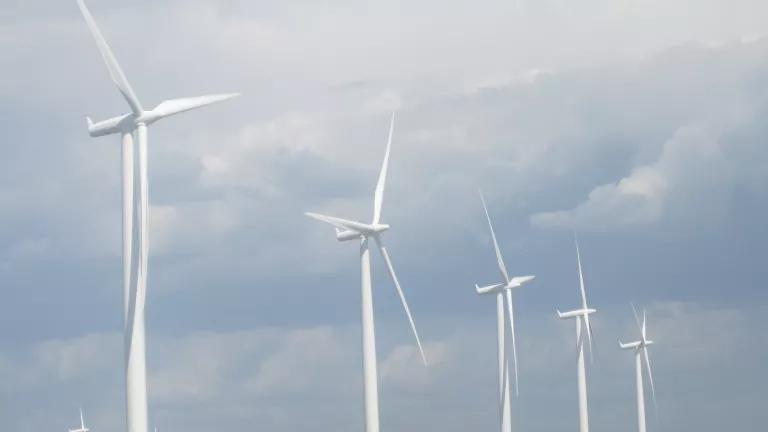The oil and gas industry leaks a significant amvount of natural gas into the atmosphere. Most of this leaked gas is methane, a powerful greenhouse gas pollutant. This leaked gas also represents lost product for the oil and gas industry, so capturing the gas allows the companies to either sell it or put it to good use on-site. In fact, between 40 percent and up to as much as 60-80 percent of the leaked gas can be captured cost-effectively.
While natural gas burns cleaner than coal, it is nonetheless a fossil fuel and not a clean energy source. In fact, its development—from methane leakage to other threats from air quality and drinking water—has sometimes been dirty. In order to stop climate change we must move away from all fossil fuels as soon as possible, by building a future based on energy efficiency and renewable energy sources like wind and solar.
That said, we cannot ignore the fact that natural gas development still exists in this country and has been spreading. That’s why NRDC is pushing for increased protections against the environmental and public health risks it poses—water safety, community impacts and broader environmental health—where this it already underway. An important part of that is reducing gas leakage, which results in global warming pollution, smog and harmful human health impacts.
Natural gas is largely methane, which is a colorless, odorless gas that is hard to spot. While we have a general understanding of many of the typical sources that could contribute to methane emissions, it is actually quite difficult to know exactly which source at a particular facility is leaking and when. There are a handful of sophisticated methane detectors available today, such as infra-red cameras and chemical analyzers, but they are typically expensive and labor-intensive to use, and not suitable for the continuous monitoring of leaks.
So, what we need are inexpensive methane detectors, always on the lookout, which can be widely deployed throughout the natural gas supply chain, and alert producers and operators to leaks. Such a leak monitoring system, if incorporated into rigorous leak repair protocols, would be an important and effective tool to mitigate leakage.
The Environmental Defense Fund along with five oil and gas companies is embarking on a project to catalyze the market into delivering just such a methane detector. The project was announced today, and a Request for Proposals (RFP) has been issued. Technology developers are expected to submit applications within 75 days. A group of representatives from EDF and the companies will collaboratively select RFP applications, whose technologies would then undergo testing by Southwest Research Institute, one of the nation’s largest and most well-established, independent applied research organizations. In 2015, the participating companies would have the opportunity to make trial deployments and pilot purchases in the U.S. and abroad.
The group is also advised by an independent advisory panel of experts from academia, the research and technology community and other non-profit organizations. I was invited to represent NRDC and join this advisory panel, which will offer technical and market guidance on how to monitor leakage. Based on our experience researching methane leakage, NRDC and I plan to contribute to this project and catalyze the industry towards making meaningful emissions reductions. However, we have not committed to endorsing any particular product or result that may come of this effort. Only time will tell what that would look like, but we look forward to participating.
NRDC is committed to protecting people, communities and the environment from fossil fuel development and climate change pollution. We hope that this project will lead to the development and, ultimately, the deployment of inexpensive, effective leak monitoring systems that can help reduce harmful climate and air pollution from existing oil and gas industry operations.



